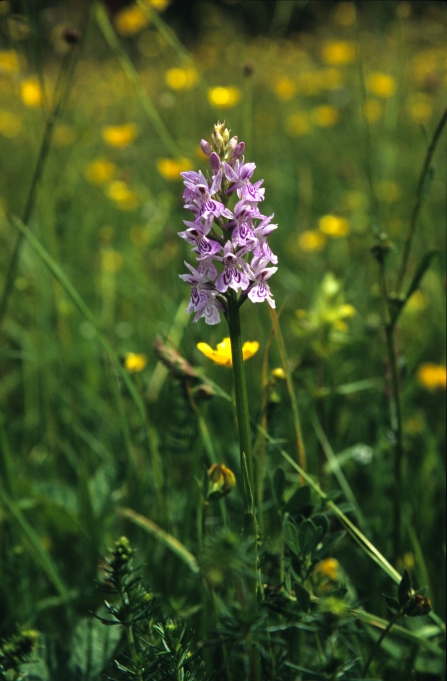
A Culm grassland meadow at Volehouse Moor nature reserve. Photo, David Chamberlain
Roe deer. Photo, Alexander Backus
Location
Know before you go
Dogs
When to visit
Opening times
Open at all timesBest time to visit
May to SeptemberAbout the reserve
Tucked away in the undulating north-west Devon countryside, Volehouse Moor is a reserve divided into two halves by the River Torridge.
Its series of Culm wildflower meadows are bordered by traditional hedgebanks. In summer these meadows are filled with the flowers of heath-spotted orchids, ragged robin, yellow rattle and meadow thistles.
Ash dieback
The disease ash dieback is now widespread in the UK and is present at many of our nature reserves, so we carry out tree felling across our sites in winter months. For your own safety please observe temporary path diversions and closures.
Where possible we will leave affected ash trees in place to decay naturally as an important habitat for wildlife. We plan to only fell diseased ash trees which pose a threat to people or infrastructure. Before trees are felled, we will check whether any rare or protected wildlife is present. If it is, we will postpone or avoid felling these trees. No felling will take place during the bird nesting season.
DWT’s Saving Devon’s Treescapes project are working with communities, landowners and businesses to help make Devon's precious treescapes more resilient in the face of ash dieback. Find out how you can get involved here.
NOTICE: If you are visiting our reserves, please note that there have been instances of H5N1 Avian bird flu found in birds in Devon. There is very low risk to public health, but we do ask that if you come across any unusual or unexplained bird deaths on or near our reserves, please do not touch them and avoid allowing your dog to come into contact with dead birds. Please report them to Defra here or call 03459 335577 and also report your findings to DWT by email at contactus@devonwildlifetrust.org.
Contact us
Environmental designation

Heath-spotted orchid. Photo, David Kilbey
Day and night
Marbled white butterflies and rare marsh fritillaries move between flowerheads, while buzzards circle high above.
At night dormice move among the hedges and traditional Devon hedge banks that border the fields, while bats hunt moths across the tops of the grasses.
Full of song
Woodland takes over at the bottom of Volehouse Moor's gently sloping sides. Wet in parts, the trees provide cover for birds including tree pipits, blackcaps and garden warblers to sing from.
Otters take advantage of the good supply of frogs that live here, while kingfishers use the low boughs of trees which overhang the river to dive for bullheads, sticklebacks and minnows.


